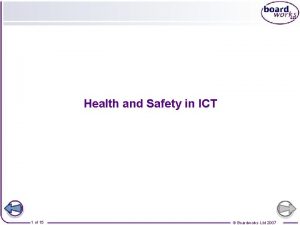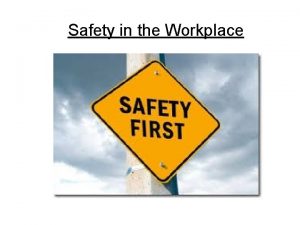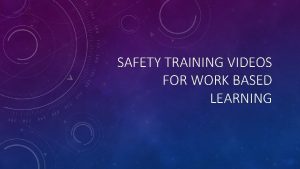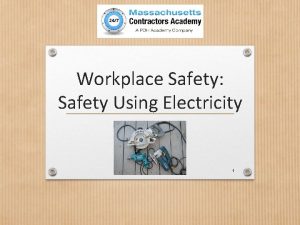SAFETY MINUTE Danielle Orea Workplace Issues Workplace safety







- Slides: 7

SAFETY MINUTE Danielle Orea

Workplace Issues Workplace safety is unfortunately one of the things that is overlooked when going into a job, especially by young adults because of their desire to please their employers. It is difficult for people ages 15 -24 to judge for themselves if something is safe for them to do or not. People in these ages are usually not aware of their rights, too timid to ask questions, or even feel tired or pressured. In the first six months of a job, it is likely for young people to get hurt in their workplace.

Lost Youth There about 250, 000 working youth aged 15 -24 years old in British Columbia. These are students working part time or new workers entering the field after graduating from university. Unfortunately, whether in high school working at the mall or finally becoming a doctor, the risk for injury is high among new workers. Some injuries may be small, but others still are serious and could cause permanent disabilities or even death. What should be taught to anyone entering the workforce is that they have the right to argue for their safety.

New Workers Employers should focus especially on their younger employees because of the risk that their young employees could possibly be running. It’s important to train them properly. Young male workers are especially at risk and most accidents occur within the first six months of a young person’s job.

Workers’ Rights Workers have three basic rights. First, is the right to know what the hazards are around the workplace. Whether it’s someone else’s task or your own, the employer should be responsible for informing their employees about potential risks. Second, workers have the right to speak up. This includes asking for training and demonstrations before doing the task singlehandedly. Finally, workers have the right to refuse. If there is a hint of uncertainty about a certain task, they have the right to ask for proper training.

Conclusion While every worker still has their rights, it’s still part of their job to act responsibility in the workplace. That means following the procedure correctly, wearing the correct safety equipment, or even asking for extra training.

THE END













